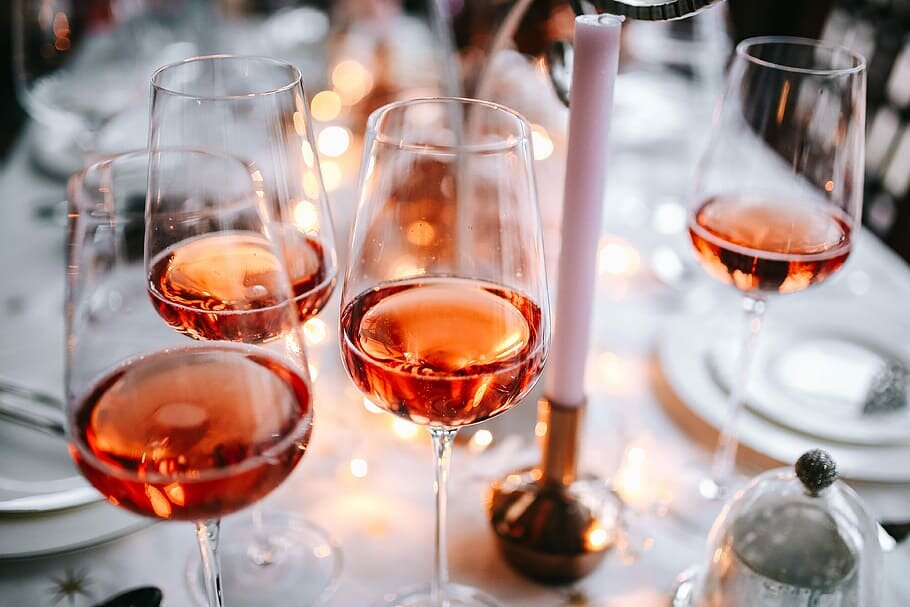
Dear reader,
What is your opinion on rosé wine?
I’m hoping that you, wine lover, enjoy it somehow, even if it’s not your favourite choice.
Well, it could be that you either enjoy rosé as a mere “leisure/picnic drink” or that you simply dismiss it as an inferior style of wine. And these could not be farther from the truth.
For too long, rosé has held a very unjust reputation of being a sweeter, artificially developed wine. And we, still do this day, explore very little of its nuances. Yes, rosé has very different styles according to its respective grapes, methods and terroirs.
The truth is: rosé has been made for a very long time (some deem it even the oldest form of wine) and carries many wonderful possibilities to enjoy complexity, versatility and new frontiers in winemaking. Why not know a little more about it?
Let’s starting off a quick guide on rosé with how rosé is made.
How rosé wine is made
Even though many believe that rosé is a wine that is blended from red and white, there are actually three major ways to produce it: skin contact, saignée, and (to a lesser scale) blending.
Skin contact, as the primary rosé-oriented method, means that the crushed skins of the darker grapes are kept in contact with the juice for a limited period. It usually spans from two to 24 hours – depending on how intense the final colour is intended to be. As the must is pressed, the skins are then discarded, unlike in red wine, where they are fermented together.
Variations here include immediate and direct pressing of red grapes as in white winemaking (vin gris), letting skins break and providing a very pale pink hue and a delicate flavour profile.
Meanwhile, a big share of rosés, particularly French, are actually made from a technique called “saignée” (literally “bleeding”), in which rosé works actually as a byproduct of red wine. It happens when a winemaker removed the early-stage pink juice (bleeding!) to ensure higher tannin and colour concentration to the must that is going to be fermented, leading to drier, fuller-bodied results. The “bled” rosé is then fermented separately to ferment on its own, leading to fruitier and richer results.
Meanwhile, the red and white mixing is pretty rare, being forbidden by law in France and immediately dismissed in many other places. Only exception is for rosé Champagne, that (in few occasions) may have a Pinot Noir added to Chardonnay for hue, for example. But even in this case, saignée is still the preferred method.
The most iconic styles of rosé
Different shades of rosé (by Wine Folly)
Whereas Old World rosés tend to be drier, New World produces have been increasingly competing in the international scene with new labels and free from regional regulations on the use of certain grapes. Much to explore!
Let’s have a look into different grapes and rosé styles:
Provençal rosé
Provence is arguably the world capital of rosé. The southeastern French region has rosé almost as a lifestyle, and its quality-driven produces are usually the world’s most sought-after rosé bottles. Cheaper options are also found everywhere.
Provence rosés are classically made from Grenache (more fruit-forward and ruby hued), Cinsault and Mourvèdre (pale, more floral and mineral), whereas richer Syrah also has its own share.
In terms of profile, Provence rosés are normally fresh, crisp, with tart and citric flavours – and famous for their versatility in pairing!
Syrah rosé
Even though Provence also makes some Syrah rosé, this bold grape which makes full-bodied reds is perfected in other places, such as Oregon, by saignée. Leads to dry, bolder, deep ruby-toned rosés, with spicy and red fruit notes. Almost a red, some would say.
Zinfandel rosé
Many Americans would call it “White Zinfandel”. The off-dry rosé that is major in the US makes up for more than 80% of its Zinfandel production. Its sweet approach goes great with seasoned foods like Thai.
Tempranillo (rosado)
The pale pink rosé from the signature Spanish grape has a somewhat unique freshness from watermelon and raspberry notes – going smoothly with spicy chicken dishes. Look for Rioja.
Tavel rosé (Cotes du Rhône)
Rhône is always full of good surprises. Its rich, savory rosés are famous not only for their dry and earthy profile (which really pleased a notable drinker, Ernest Hemingway), but they carry a fair amount of body and structure even though they’re made from mostly Grenache and Cinsault, which confer in contrast a relatively pale colour.
Sangiovese (rosato)
Tuscany’s signature grape not only originates those marvelous reds: it also makes fruity rosés, with a lovely copper colour and yellowish fruit notes. Yet, its rosés are dry and with great acidity. New World countries that plant Sangiovese also explore fruitier versions.
Pinot Noir rosé
The classic light red makes delicate rosés which are at the same time crisp, earthy, with red fruit flavours. Just as Pinot Noir reds, these are dry and acidic to the right amount.
* * * * *
Other rosés that every now and then might show up include Cabernet Sauvignon rosés (darkish, albeit not oaky) and sparkling rosés (Champagne, Cava, Prosecco too) – which, depending on where you look to, might come from saignée or discreet mixing.
Let’s keep exploring!
Until next time.
